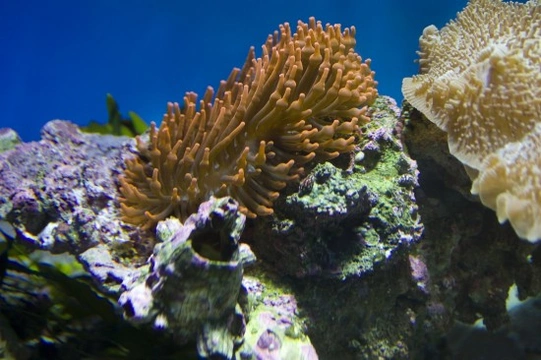
Your marine aquarium and live rock: Essential guide
Live rock—the kind used in marine aquariums—is a foundational element for creating a natural and healthy saltwater environment. While technically not "alive" in itself, live rock supports a diverse community of marine organisms that contribute strongly to aquarium stability and aesthetics.
For new marine fish keepers, the concept of live rock can be puzzling, but understanding its role is essential for success. This detailed guide explains what live rock is, why it matters, and how to select and care for it responsibly.
What is live rock?
Live rock is primarily composed of calcium carbonate structures formed by ancient coral skeletons and other calcareous marine life. It becomes "live" due to the vast array of microscopic and macroscopic marine organisms colonising it, such as coralline algae, sponges, copepods, worms, and beneficial bacteria.
It is important to note that harvesting live rock directly from coral reefs harms delicate ecosystems and should be avoided. Instead, opting for sustainably sourced or aquacultured live rock supports responsible aquarium keeping.
How does live rock benefit your marine aquarium?
Live rock performs several vital functions that help maintain a stable and healthy marine environment:
- Biological filtration: Beneficial bacteria living inside the porous rock break down harmful ammonia and nitrite into less harmful nitrate, crucial for maintaining safe water quality.
- Habitat and shelter: It provides hiding spots and surfaces for fish, invertebrates, and corals, reducing stress and encouraging natural behaviours.
- Coral substrate: Its structure forms a natural base for coral attachment and growth, supporting reef development in the aquarium.
- Natural aesthetics: Live rock lends a visually authentic reef-like appearance, often coated with pretty coralline algae that help prevent nuisance algae growth.
- Micro-ecosystem support: Hosts diverse marine life, boosting biodiversity and enriching your aquarium’s ecosystem.
Types of live rock and selection tips
Choosing the right type of live rock depends on your aquarium goals and ecological considerations:
- Wet live rock: Collected from the ocean and wet when delivered, often containing a variety of hitchhiking organisms. It requires careful curing to stabilise before use.
- Dry live rock: Essentially lifeless rock that "comes alive" over time as beneficial organisms colonise it after addition to your aquarium. It is more environmentally friendly as it does not directly impact natural reefs.
- Aquacultured live rock: Cultivated in controlled environments, offering healthy biodiversity and environmental responsibility.
- Base rock: Dense, non-living rock used to build structures. It does not become live on its own but is a cost-effective support base for live rock displays.
Live sand: a complementary component
Live sand functions much like live rock, providing beneficial bacteria and microfauna that assist in biological filtration and create a natural seabed appearance. It generally comes pre-packed and wet, helping maintain viability until use.
How to cycle live rock and prepare your aquarium
- Minimise air exposure: Keep live rock moist and reduce the time it is out of water during setup to preserve beneficial organisms.
- Curing: Freshly harvested live rock often contains decaying material that can release harmful ammonia. Curing by soaking in saltwater, aerating, and monitoring water parameters helps stabilise the rock.
- Seeding dry rock: Dry rock placed in an established live aquarium slowly becomes colonised by microorganisms over weeks to months.
- Incorporate filtration systems: Though live rock contributes significantly to biological filtration, combine it with protein skimmers, mechanical filtration, and seeded biological filtration for optimal water quality.
Common mistakes to avoid with live rock
- Avoid purchasing dry rock marketed as live without clarification, as it may require weeks to establish beneficial organisms.
- Don’t harvest live rock from reefs yourself to protect natural environments.
- Don’t rush adding livestock before live rock is fully cured or cycled.
- Avoid freshwater exposure, which kills many beneficial organisms.
Conclusion
Live rock is essential for a thriving marine aquarium, providing biological filtration, habitat, and aesthetic value. Selecting sustainably sourced or aquacultured live rock, combined with proper curing and care, supports a healthy, stable ecosystem for your saltwater fish and invertebrates. Including live sand further enhances natural filtration and the beauty of your tank’s environment. Embracing these natural foundations will help you create a beautiful, balanced marine aquarium that supports diverse marine life.
For those interested in expanding their marine aquatic hobby, exploring find a marine fish can be a wonderful next step, always prioritising responsible care and sourcing.



